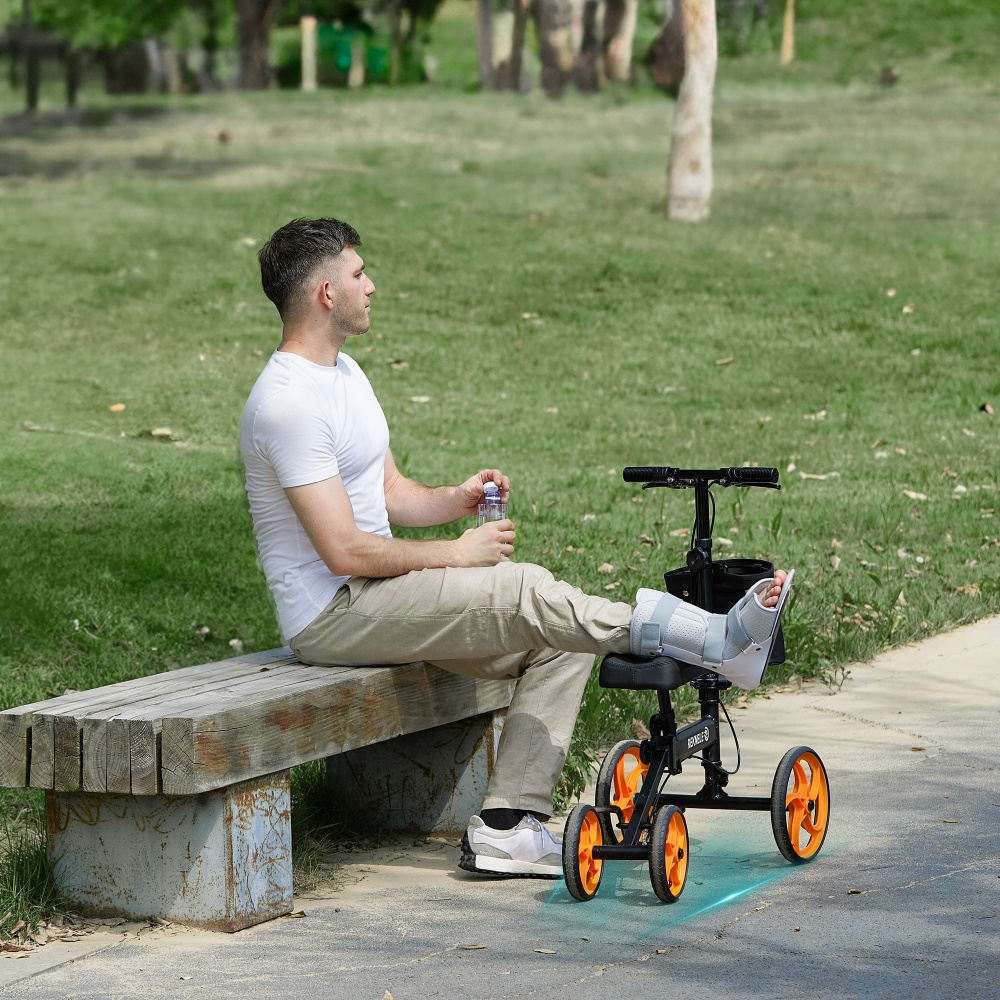1. What is a disabled walker?
A mobility aid designed to help people with disabilities walk safely and steadily.
2. How does a disabled walker differ from a regular walker?
A disabled walker often has extra features like seats, brakes, or wheels for added support.
3. Who can benefit from using a disabled walker?
People with limited mobility, injuries, chronic conditions, or balance issues.
4. Are there different types of disabled walkers?
Yes — standard walkers, rollator walkers, upright walkers, and knee walkers.
5. How do I choose the right disabled walker?
Consider height, weight capacity, mobility needs, and where it will be used.
6. What is the difference between a rollator and a standard walker?
A rollator has wheels and brakes; a standard walker has no wheels and must be lifted.
7. Can disabled walkers be used indoors and outdoors?
Yes, but choose models with larger wheels for outdoor use.
8. How much weight can most disabled walkers support?
Typically 250–400 lbs; bariatric models can support more.
9. Are there disabled walkers with built-in seats?
Yes, many rollators have fold-down seats for resting.
10. Can I adjust the height of a disabled walker?
Yes, most have adjustable handles for proper posture.
11. Do disabled walkers fold for storage?
Yes, many models fold for easy transport and storage.
12. Are there lightweight disabled walkers?
Yes, aluminum frames are common for easy lifting.
13. Can a disabled walker help prevent falls?
Yes, when used correctly, they improve stability and balance.
14. What safety features should I look for?
Brakes, non-slip grips, sturdy frames, and stable wheels.
15. Do disabled walkers require maintenance?
Yes, check brakes, wheels, and frame regularly.
16. Are there disabled walkers with brakes?
Yes, most rollators have hand brakes for safety.
17. How do I use a disabled walker on uneven ground?
Go slowly, keep weight centered, and use larger-wheeled models.
18. Can disabled walkers be used with one weak arm?
Some designs, like hemi-walkers, work for one-sided support.
19. What accessories are available?
Baskets, cup holders, cane holders, and storage bags.
20. Are disabled walkers covered by Medicare or insurance?
Often yes, with a doctor’s prescription.
21. How do I measure for the correct height?
Handles should align with your wrist crease when arms are at your sides.
22. Can disabled walkers support bariatric use?
Yes, heavy-duty models are available.
23. Are there disabled walkers for children?
Yes, pediatric models are designed for smaller users.
24. How do I clean a disabled walker?
Wipe the frame with mild soap and water; sanitize grips and seat.
25. Can I fly with a disabled walker?
Yes, most fold for easy transport and can be gate-checked.
26. Are there walkers for small spaces?
Yes, narrow-frame walkers are made for tight areas.
27. How long does a disabled walker last?
With care, several years, depending on usage.
28. What’s the price range?
From about $50 for basic models to $500+ for advanced ones.
29. Do they come with warranties?
Many have 1–3 year warranties, depending on brand.
30. Where can I buy one?
Medical supply stores, online retailers, and pharmacies.
